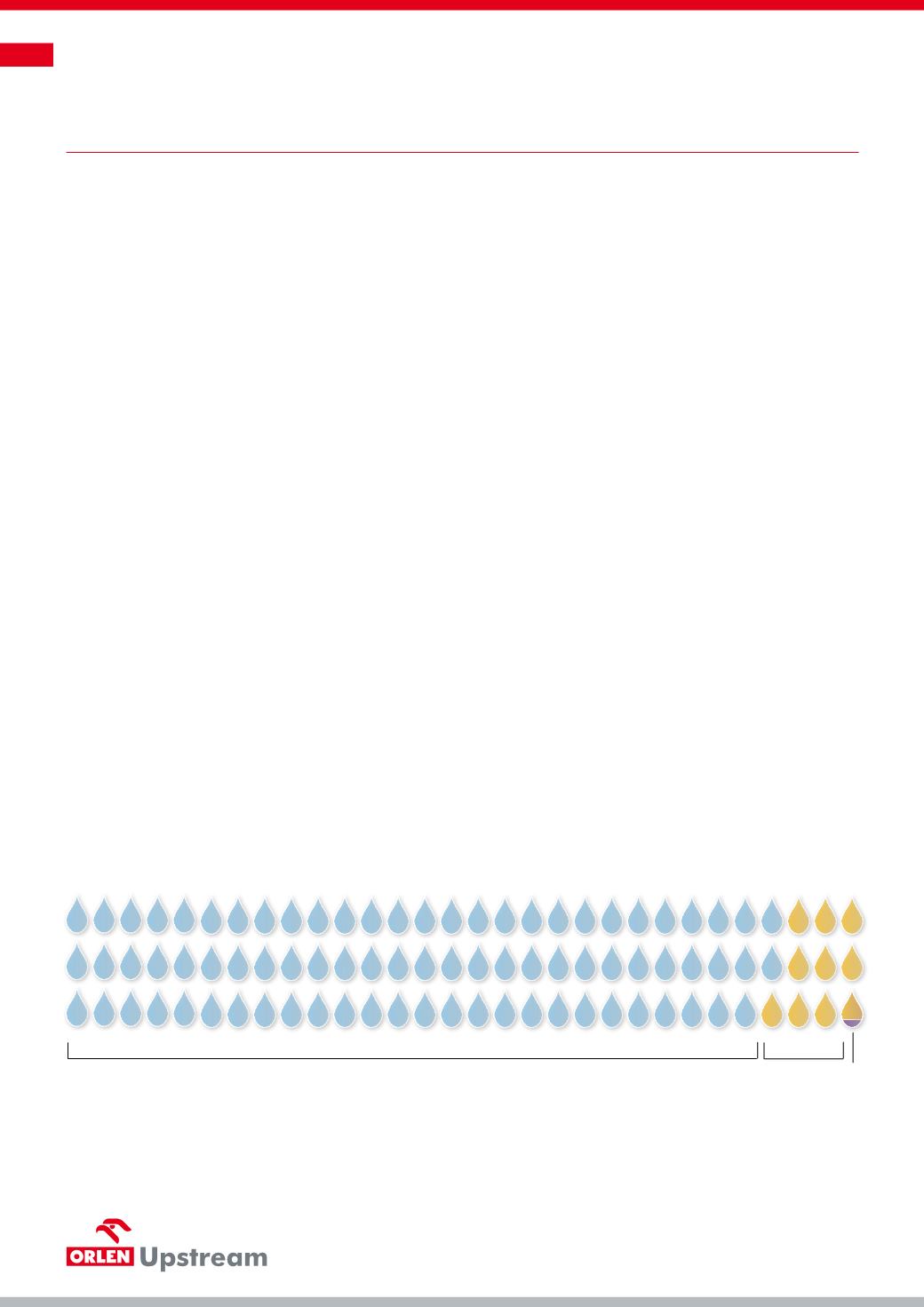
Things to know about shale gas
4
Hydraulic fracturing
Hydraulic fracturing, is a tried and tested, controlled,
and technologically advanced process that employs
well-known laws of physics. Its aim is to create such
conditions inside the well as to make the extraction of
natural gas (from shale rock, among others) possible.
Also known as ‘hydrofracturing‘, it has been known
and used for many years. It was first used in the
1940s and the technology has been continuously
improved and successfully used worldwide ever
since. So far over 2,000,000 instances of hydro-
fracturing have been carried out.
Hydrofracturing is the final stage in the process of
reservoir exploration, and it results in gas flowing
into the well and on to the surface. Hydrofracturing
is always preceded by a preparatory stage, which
may take months or years, and includes analysing
seismic and geological data, performing test dril-
ling, studying the petrophysical and geomechani-
cal features of rock cores, etc.
A detailed analysis of the reservoir properties
allows a flawless preparation and optimisation of
the hydrofracturing process. The work, in spite
of the fact that it is carried out several kilometres
under the surface of the ground, requires cloc-
kwork precision.
The process of hydrofracturing entails pumping
fluid (known as fracturing or stimulation fluid) into
the well. Over 99% of the stimulation fluid consists
of water mixed with sand. Depending on the con-
ditions in the reservoir and the well, it also contains
a small addition of other substances that make hy-
drofracturing more effective. A single well requires
an average of between 8,000 m
3
and 14,000 m
3
of water and 450 to 680 tonnes of sand, but the
exact figures depend on the length of the 5-inch-
-diameter horizontal well, which is where hydro-
fracturing takes place. The chemical additives in
the stimulation fluid are there to prevent the corro-
sion of pipes (bactericidal substances), reduce the
settling of the sand (gelling agents), and to prevent
fluid viscosity from fluctuating. The actual compo-
sition of the fluid is determined on a case-by-case
basis and it ultimately depends on the properties of
the gas reservoir in question.
Composition of the stimulation fluid
Chemical
additives
~ 0,1%
Water
Sand
~ 95%
~ 5%


